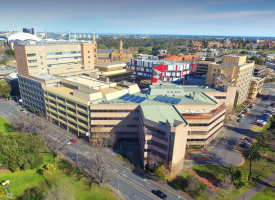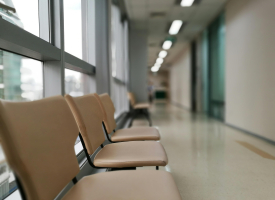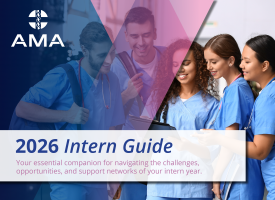Dr Bartone - Public Hospitals and preventative health
Transcript: AMA President Dr Tony Bartone, 2GB Breakfast, 8 January 2020
Subjects: Public Hospitals and preventative health
JOHN STANLEY: Tony Bartone is the President of the AMA. We've touched on this story that's around today about the public hospital system, which is buckling under the weight of a growing population. We know we've had a huge surge in our population over the last decade or so and, of course, the ageing population as people get older. People also live longer, but as they live longer- so people work into their seventies, they can work into their early eighties and then they live longer but they need more health care, they need more operations, so how are we dealing with all of this?
Tony Bartone joins us now. Good morning to you.
TONY BARTONE: Good morning, John.
JOHN STANLEY: I guess it's simple maths. If you've got a lot more people and they're getting older, you're going to need more staff and more equipment.
TONY BARTONE: Your summation’s entirely correct, and the other part of that equation is that not only are they living longer and we're increasing in number, but also the number of chronic and complex diseases that we're dealing with are putting an additional load. So, it's a triple whammy, you might say, on the requirements of our overstretched health system.
JOHN STANLEY: Yeah. When we talk about additional investment in primary care, I mean, we're talking there about going to the GP, looking after yourself, and doing the things that don't have you ending up in the hospital with serious conditions.
TONY BARTONE: And that's the underpinning basis. But it's about doing things more efficiently and more effectively and earlier on along the disease curve continuum, you might say. So if we've got a GP with a team of allied health professionals supporting him or her in their practice, they're able to effectively leverage their skills across a large [audio skip] duration, and thereby relieve some of the burdens on the outpatients' department of our public hospitals. And that is a much smarter, much wiser use of the scarce healthcare dollar, but also if we get in early, we can prevent a lot of the unwanted outcomes which result in unnecessary hospitalisations and surgery and ongoing care.
JOHN STANLEY: So, is it as simple as getting more people to actually go to the doctor and have themselves checked up, to see what their state is like, and then get them actually looking after themselves better?
TONY BARTONE: It's a multipronged approach and that's part of it. But it's also about having the ability to intervene earlier, having the public health education, the appropriate incentives to get people to go there but then, once they're there, having all the available tests and all the available services to wrap around that patient to ensure he or she does what’s needed to to keep themselves in the tip-top best health and condition.
JOHN STANLEY: I remember, in fact probably I was doing this program, might have been about 30 years ago when Alan was on leave and Bruce Shepherd was the boss of the AMA and I remember he said at the time well, if no one had ever smoked, we wouldn't have a problem with Medicare or the burden on the health system. We've got, of course, much fewer people smoking but the consequences are being felt. But is there one disease that you think with early intervention, more awareness, better management, we could really do something in terms of the weight on the system?
TONY BARTONE: Look, there's probably a couple of things that fit into that classification. Obviously, smoking was a big issue, but it's still an ongoing significant factor with 11 or 12 per cent of the population still smoking as we speak. But diabetes and obesity, those two twin conditions are going to drive an enormous burden on our healthcare dollar and our healthcare outcomes for the next decade or more.
JOHN STANLEY: Yeah. Now look, a fellow I did an interview with him a couple of weeks ago, Ray Kelly, he's doing a show with Michael Mosley, you'd be aware of, he's a celebrity doctor but he promotes the idea of preventive health and trying to lose weight and trying to manage what you eat and how your lifestyle can feed into your diabetes. The more of that, surely, we could have, the better.
TONY BARTONE: Absolutely, and look, people start to glaze over when they hear the words ‘preventative healthcare’ and they think that you need to be in Spartan running marathons. It's absolutely about moderation and about making wise decisions and informed decisions and making little changes in every part of your ongoing lifestyle.
JOHN STANLEY: Yeah. We all think we're great marketing men, but I've wondered for years why, when we have all these advertising campaigns saying save for your retirement, saving your super, put money away, save money for a rainy day, why haven't we structured an advertising campaign to save health for your retirement? Because it's not much good having all that money and not being able to move, not being able to get around.
TONY BARTONE: And this is exactly the point. The point is that we're all worried about what things are going to be like in the future but we tend to neglect our own health, and it's our health that really will determine the quality of our lifestyle once we do retire and into our final decades of life on this planet.
JOHN STANLEY: Just one other story that popped up this week. They're talking about rural doctors being almost put up on the level of specialists so that you can attract more young people to go and become rural doctors where they've got to essentially work across a whole range of specialities. The romance of being a country doctor, we've seen it on television, books, everything, but it seems it's very hard to get young people to go and do it.
TONY BARTONE: Unfortunately, this is a sad truth and we're dealing and struggling with this at the present time. Rural and regional Australia have a larger burden of health disease on their communities, but they have access to less and less of the health service than their city counterparts. We've got to- part of that is to attract more doctors to rural and regional Australia, but to do that not only is it about the access to financial incentives as being outlined there, but it's about the whole infrastructure. It's about providing the best technology, the best care and the access to that care, which is required to keep and to treat patients in their communities in rural and regional Australia. So there are many factors underpinning that, and we've really got to get smarter about what we do in that case.
JOHN STANLEY: Alright. Look, good to talk to you and we'll keep in touch. I thank you.
____________________________________________________________________________
8 January 2020
CONTACT: John Flannery 02 6270 5477 / 0419 494 761



